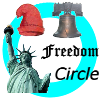Nicaragua, officially the Republic of Nicaragua (Spanish: República de Nicaragua), is the largest country in the Central American isthmus, bordered by Honduras to the northwest, the Caribbean to the east, Costa Rica to the south and the Pacific Ocean to the southwest. Managua is the country's capital and largest city and is also the third-largest city in Central America, behind Tegucigalpa and Guatemala City. The multi-ethnic population of six million includes people of indigenous, European, African and Asian heritage. The main language is Spanish. Native tribes on the Mosquito Coast speak their own languages and English.
Geographical type: Territory
Latitude: 13° N — Longitude: 85° W
Area: 130,375 km²
ISO 3166-2 code: NI
Measures of Freedom
2019: 6.24, Rank: 125, Personal Freedom: 5.67, Economic Freedom: 7.04
2014: 7.39, Rank: 45
2016: Status: Partly Free, Aggregate Score: 54, Political Rights: 4, Civil Liberties: 3
Articles
Lists countries where the CIA conducted subversive operations and recommends abolishing the agency.
Review of Stasiland: True Stories from Behind the Berlin Wall by Anna Funder and After the Wall: Confessions from an East German Childhood and the Life That Came Next by Jana Hensel
Recounts how U.S. Presidents and their administrations since James Polk have been deceitful about wars and military engagements
Videos
The introductory paragraph uses material from the Wikipedia article "Nicaragua" as of 23 Sep 2018, which is released under the Creative Commons Attribution-Share-Alike License 3.0.
